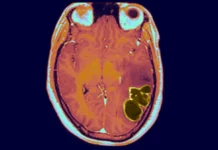The proliferation of YouTube as a ubiquitous cornerstone of the internet age is a phenomenon that has seen millions of users across the globe tune in to watch videos on a wide variety of topics. However, this once beloved platform is now facing a growing threat from AI-generated videos leading unsuspecting users to info-stealing malware.
This trend is particularly alarming given that AI-generated videos have become increasingly sophisticated in recent years, making it exceedingly difficult for users to differentiate between authentic and fake videos. The rise of deepfake technology has made it easier than ever for cybercriminals to create convincing fake videos that can mislead users into clicking on malicious links or downloading malware.
One clear illustration of this trend is the series of videos that have been circulating on YouTube, purporting to show footage of celebrities and politicians engaging in illegal activities or making controversial statements. These videos are often accompanied by sensational headlines and provocative thumbnails, designed to lure users into clicking on the video and watching it in its entirety.
Once users have clicked on the video, they are often directed to a malicious website that prompts them to download a file or click on a link. This can result in users inadvertently downloading malware onto their computer or mobile device, which can be used to steal personal information or carry out other nefarious activities.
The danger of these AI-generated videos lies in their ability to deceive users into thinking they are real. Unlike traditional phishing emails, which often contain obvious spelling and grammar errors or come from suspicious email addresses, these videos can appear to be authentic and trustworthy, making it harder for users to identify them as fraudulent.
Moreover, these videos can propagate rapidly through social media channels, with users sharing them with friends and family in the belief that they are exposing important information. This can lead to the rapid spread of misinformation and the dissemination of malware to a wide audience.
In response to these concerns, YouTube has implemented a number of measures aimed at detecting and removing fake videos from its platform. These include machine learning algorithms that can identify and flag suspicious content, as well as partnerships with third-party organizations that can help to identify and remove fraudulent videos.
Despite these efforts, however, the problem persists, with new AI-generated videos appearing on YouTube every day. This has prompted calls for greater regulation of the platform and stronger penalties for cybercriminals who create and distribute fake videos.
To address these concerns, YouTube has announced that it will be investing heavily in its AI capabilities to combat the rise of fake videos. This includes the development of more sophisticated algorithms that can detect and remove fraudulent content, as well as partnerships with cybersecurity firms that can provide additional resources and expertise.
However, some experts argue that this may not be enough, and that greater regulation of the platform is necessary to protect users from the dangers of fake videos. This could involve the introduction of stricter penalties for those who create and distribute fraudulent content, as well as greater transparency and accountability on the part of YouTube and other social media platforms.
Meanwhile, users are advised to be cautious when watching videos on YouTube, and to exercise caution when clicking on links or downloading files from unknown sources. This includes checking the authenticity of any video or website before sharing it with others, and using anti-malware software to protect against potential threats.
As the threat of AI-generated videos leading unsuspecting users to info-stealing malware continues to grow, it is clear that more needs to be done to protect users from the dangers of fake content and malware. Whether this involves greater regulation of social media platforms or improved AI capabilities, the stakes are high, and action must be taken to safeguard the online community.
It is worth noting that the issue of AI-generated videos leading unsuspecting users to info-stealing malware is not limited to YouTube alone. Other social media platforms such as Facebook, Instagram, and TikTok have also been identified as potential breeding grounds for fake videos and malware. Therefore, it is imperative that these platforms also take steps to address this issue and protect their users. This could involve implementing similar measures to those taken by YouTube, as well as working together to share information and resources on combating fake videos and malware.
In addition to the technological solutions being developed by social media platforms, education and awareness-raising campaigns may also play a crucial role in protecting users from the dangers of AI-generated videos. This could involve teaching users how to identify fake videos and suspicious links, as well as promoting safe online practices and the use of anti-malware software.
Overall, the issue of AI-generated videos leading unsuspecting users to info-stealing malware represents a significant threat to the online community. While steps are being taken to address this issue, more needs to be done to protect users and prevent the spread of fake content and malware. Whether through technological solutions, regulation, or education, it is crucial that action is taken to safeguard the integrity of online platforms and protect the privacy and security of users.








